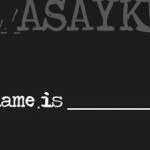The Rufus Reid Trio at the Jazz Kitchen: Comfortable mastery from the bass on out

The veteran bassist Rufus Reid is steeped directly in influences that stem from the favorable position jazz once enjoyed in popular culture: He first encountered the music of Horace Silver on a jukebox in Birmingham, Ala., in the early '60s. Reid has both an old head and a young heart — an impression based on his second set Saturday night at t he Jazz Kitchen. when he told that story. Rufus Reid rendering righteousness Fresh from an appearance Friday at the Chicago Jazz Festival, the 70-year-old master fronted a trio with pianist Steve Allee and drummer Steve Houghton. A nearly full house reveled in the comfortable vibe created by this compatible threesome in a half-dozen tunes, plus an encore suitable for a jazzman who's seen a lot: Eubie Blake's "Memories of You." Indianapolis jazz fans know how capable Allee is of creating and sustaining a performance's atmosphere. So it was no surprise that the leader let him open a couple of the tunes unaccompan...











